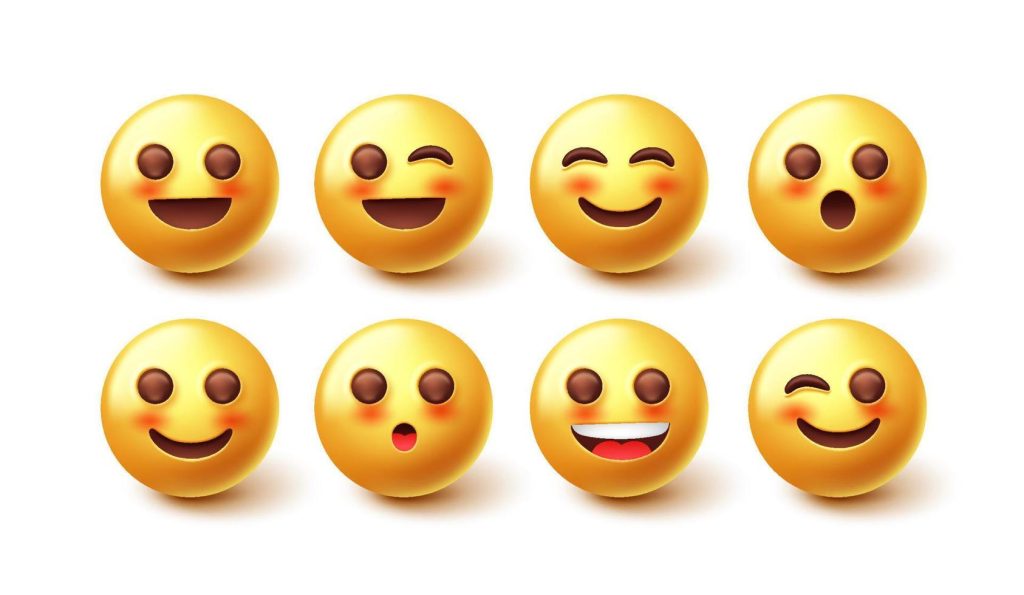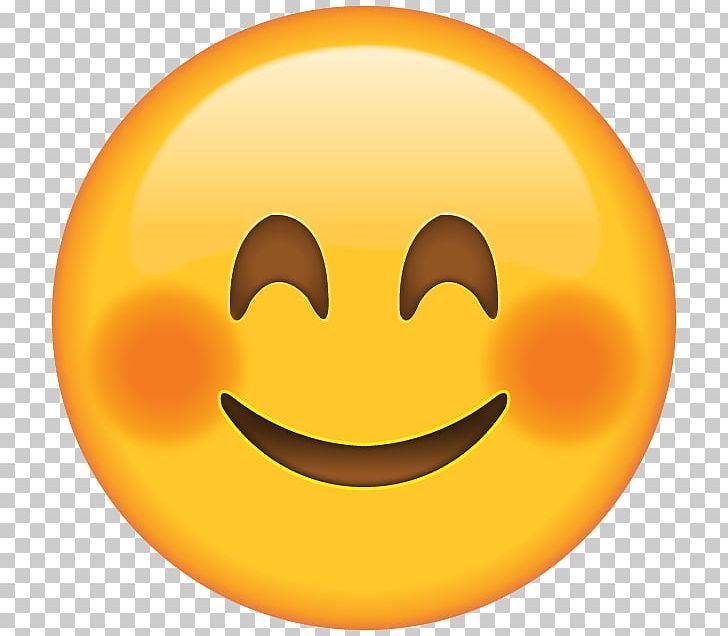Cute Blushing Face 😳 is one of the most expressive emojis used in texting and social media. It instantly conveys feelings of shyness, embarrassment, or flattered happiness, making it perfect for playful or affectionate conversations.
Often, it shows that someone feels touched by a compliment, a sweet message, or a lighthearted joke. Beyond simple shyness, the cute blushing face can also signal flirtation or admiration, depending on the context.
Pairing it with other emojis, like hearts or smiles, enhances its warmth and emotional nuance. Understanding how to use this emoji effectively can make your digital conversations more expressive and relatable, allowing you to communicate subtle emotions without needing many words. It’s a small symbol with big impact.

Table of Contents
What is a Blushing Face Emoji and Why Is It So Cute?
A blushing face emoji typically features a yellow face with rosy cheeks that indicate a flush or blush. This expression is universally used to show emotions like shyness, embarrassment, or affection.
The cutest blushing face emoji resonates emotionally because the blush mimics real-life reactions where the cheeks turn rosy, making the face smile or look shy. This adds a layer of innocence and charm that is visually attractive and relatable.
The facial expression of a blushing emoji often features wide eyes, sometimes accompanied by a shy smile or a slight smirk. These small details contribute to the emoji’s ability to communicate a pleasant mix of happiness, surprise, and love.
Because of its soft and adorable look, many people use it to express gentle emotions or a crush, making it one of the most popular blushing emoticons in digital communication.
How Do Blushing Emoticons Differ from Blushing Emojis?
Blushing emoticons, also called kaomojis in Japanese culture, use keyboard characters like parentheses, slashes, and letters to form expressive faces showing a blush or flush. Unlike emojis, which are graphic images, blushing emoticons rely on text-based symbols to convey similar feelings.
The blushing emoticons often show not only the blush but subtle facial gestures, like covering the face, winking, or smiling shyly, which adds a unique charm. For example, emoticons such as (⁄ ⁄- ⁄ω⁄- ⁄ ⁄)⁄ or (〃▽〃) can express embarrassment or endearment in a stylized way. These kaomojis are great for users who prefer to use text art that can be easily copied and pasted into messages or social media posts.
What Are the Most Popular Blushing Emojis to Copy and Paste?
- Many platforms offer blushing emojis that users can copy and paste directly into their conversations.
- Some of the most recognized include the “Flushed Face” emoji (😳), which depicts wide eyes and rosy cheeks, conveying surprise, embarrassment, or affectionate shyness.
- Other popular blushing emojis include simple yellow faces with subtle smiles and rosy cheeks, often used to express happiness or love.
- For instance, the smiley with rosy cheeks and a slight blush (😊) can indicate a feeling of pleasant surprise or endearment.
- Besides these, numerous blushing kaomojis and emoticons are available online that you can copy and paste, offering a wide variety of cute expressions ranging from shy smiles to playful smirks.
- These varieties make it easy to find the perfect blushing face for any emotional context.
How Can You Use Blushing Emojis to Express Different Emotions?
- Blushing emojis go beyond just showing shyness or embarrassment.
- They can express a broad spectrum of emotions, including affection, surprise, happiness, and even a subtle smirk of confidence or charm.
- For example, the rosy cheeks represent happiness and love, while wide eyes can indicate shock or pleasant surprise.
- In conversations, a blushing emoji can soften the tone of a message, making it feel more personal and affectionate.
- It can also be used as a reaction to a compliment or a cute moment in a chat, enhancing the emotional connection between people.
- Moreover, blushing emojis are perfect in romance texts or moments of playful teasing.

Why Are Blushing Face Emojis Important in Manga and Anime Culture?
In manga and anime, facial expressions are essential to conveying the emotional state of characters. The blush is a common visual metaphor for feelings of embarrassment, romantic interest, or surprise. This cultural feature has influenced the design of many digital blushing emojis and emoticons, borrowing the idea of rosy cheeks and shy smiles.
Blushing emoticons and kaomojis, which originated partly from Japanese text art, are widely used by anime fans to express similar feelings in text-based communication. These emoticons perfectly capture the subtlety of manga and anime facial expressions, including the delicate blush and the direction of the eyes, creating a culturally rich and cute way to communicate feelings.
How Do Facial Expressions Like the Blush Affect Emotional Communication?
A blush is a universal and powerful nonverbal cue in human communication, signaling vulnerability, shyness, or affection. In text communication where facial cues are absent, blushing face emojis and blushing emoticons serve as digital stand-ins for these facial expressions, making messages warmer and more emotionally expressive.
By adding a blush emoji, you can convey a level of emotional depth that words alone might not express as fully. It can indicate a flush of happiness, surprise, or even slight embarrassment, helping to endear the sender to the receiver. This enhances the interpersonal connection in chats by visually representing complex emotions easily understood across cultures.
Can Blushing Emojis Enhance Your Online Reactions and Memes?
Absolutely! Blushing emojis have become a staple in online reactions and memes, especially to express feelings of awkwardness, cute embarrassment, or an endearing surprise. They often appear as an adorable reaction in threads or comment sections where users want to show a shy response or highlight a sweet moment.
The blushing emoji meme often features exaggerated rosy cheeks and is used humorously to signify a moment of endearment or flustered acknowledgment. They add a playful and charming element to online interactions, increasing the cuteness and reaction value of posts or conversations.
What Are Kaomojis and How Do You Use Blushing Kaomojis?
Kaomojis are Japanese-style text emoticons made up of various punctuation marks and characters that form expressive faces. Blushing kaomojis specifically show a flushed face, often indicated by slashes or apostrophes representing rosy cheeks or sweat drops symbolizing embarrassment.
You can easily copy and paste blushing kaomojis like (⁄ ⁄- ⁄ω⁄- ⁄ ⁄)⁄ or (〃▽〃) into your messages to express a shy smile or bashful reaction. They are popular in online chats, social media, and gaming communities, especially among anime and manga fans, who appreciate the artistic and emotive style of these text-based faces.
How Do Blushing Emojis Capture Shy, Embarrassed, and Affectionate Feelings?
Blushing emojis are designed to reflect the warmth of rosy cheeks and the gentle smile or bashful look that comes with feeling shy or embarrassed. They often incorporate large eyes looking sideways or downward, mimicking human body language during embarrassment or romantic moments.
The blush signals vulnerability and openness, which can be very attractive and endearing. In digital conversations, this subtle facial expression helps communicate affection and emotional sincerity, bridging the gap left by the absence of physical cues.
1Where Can You Find the Cutest Blushing Emoticons to Copy and Paste?
There are numerous websites and online resources where you can find an extensive collection of cute blushing emoticons and kaomojis ready for copy and paste. Sites like Glyphy.io and EmojiCombos.com provide a variety of blushing text faces and kaomojis that express everything from shy smiles to playful blushes.
These resources allow you to add that extra charm and emotion to your messages with just a click. Whether you want a soft blush emoticon ( ⁄ ⁄- ⁄ω⁄- ⁄ ⁄)⁄ or a sweet blushing emoji like 😊, these platforms offer a convenient way to enrich your digital communication with adorable expressions.

FAQs
What is ☺ vs 😊?
☺ is a simple, classic smile, often shy or polite.
😊 is a warmer, happier smile with blushing cheeks.
The latter conveys friendliness, happiness, or affection more strongly.
Is 😊 flirty?
It can be, depending on context.
Often used to show friendliness, warmth, or slight affection.
Flirtiness is implied if paired with playful or personal messages.
What does 😊 mean from a guy?
Shows happiness, kindness, or approval.
Can indicate interest or friendliness, sometimes subtly flirty.
Context and accompanying messages determine the tone.
What does the 🤭 emoji mean?
Represents embarrassment, surprise, or playful secrecy.
Can signal a cheeky or shy reaction.
Often used to soften teasing or express “oops” moments.
What does 🤗 mean from a girl?
Shows affection, warmth, or friendliness.
Used to send virtual hugs, comfort, or support.
Can also express excitement or gratitude.
What does 🙂 ↕ mean?
🙂 is a neutral, friendly smile.
The ↕ symbol can imply mixed feelings or uncertainty.
Together, it may convey a polite, cautious, or ambivalent tone.
What does 🙃 mean?
Represents sarcasm, silliness, or playful irony.
Can indicate joking or a lighthearted twist on a message.
Often used when tone is meant to be humorous or teasing.
What does 😌 mean?
Shows relief, contentment, or calm satisfaction.
Mostly positive, but can also imply smugness if sarcastic.
Used to express peace, mild happiness, or relaxation after tension.
Key Points to Remember
- Blushing face emojis and emoticons convey shyness, affection, embarrassment, and love through rosy cheeks and expressive facial features.
- Blushing emoticons or kaomojis use text characters to create cute, expressive faces that are versatile and culturally tied to anime and manga.
- The “Flushed Face” emoji (😳) and other blushing emojis are widely used to express a range of gentle emotions and are easy to copy and paste.
- Blushing emojis enhance emotional communication in text by visually representing facial expressions that show vulnerability and charm.
- Online memes and reactions often use blushing emojis to add humor and cuteness, making conversations more engaging.
- You can find many blushing emoticons and kaomojis online to easily copy and paste into messages, social media, or chats for extra emotional effect.
Using these cute blushing face emojis and blushing emoticons can significantly enrich your digital expression, bringing warmth, charm, and personality to your messages in an effortlessly adorable way.
Conclusion
The “cute blushing face” emoji, often represented by 😊 or ☺, is a simple yet powerful way to convey warmth, affection, or shyness in digital conversations. It expresses feelings of happiness, friendliness, or gentle admiration, making it perfect for lighthearted, flirty, or supportive messages.
Its blushing cheeks add a layer of sincerity and charm, signaling that the sender is pleased, shy, or touched by something. Context determines its nuance—it can indicate genuine appreciation, subtle flirtation, or playful embarrassment.
Understanding the “cute blushing face” emoji helps make online interactions more expressive and personal. Using it thoughtfully can strengthen emotional connection, convey kindness, and make your messages feel more heartfelt and relatable.